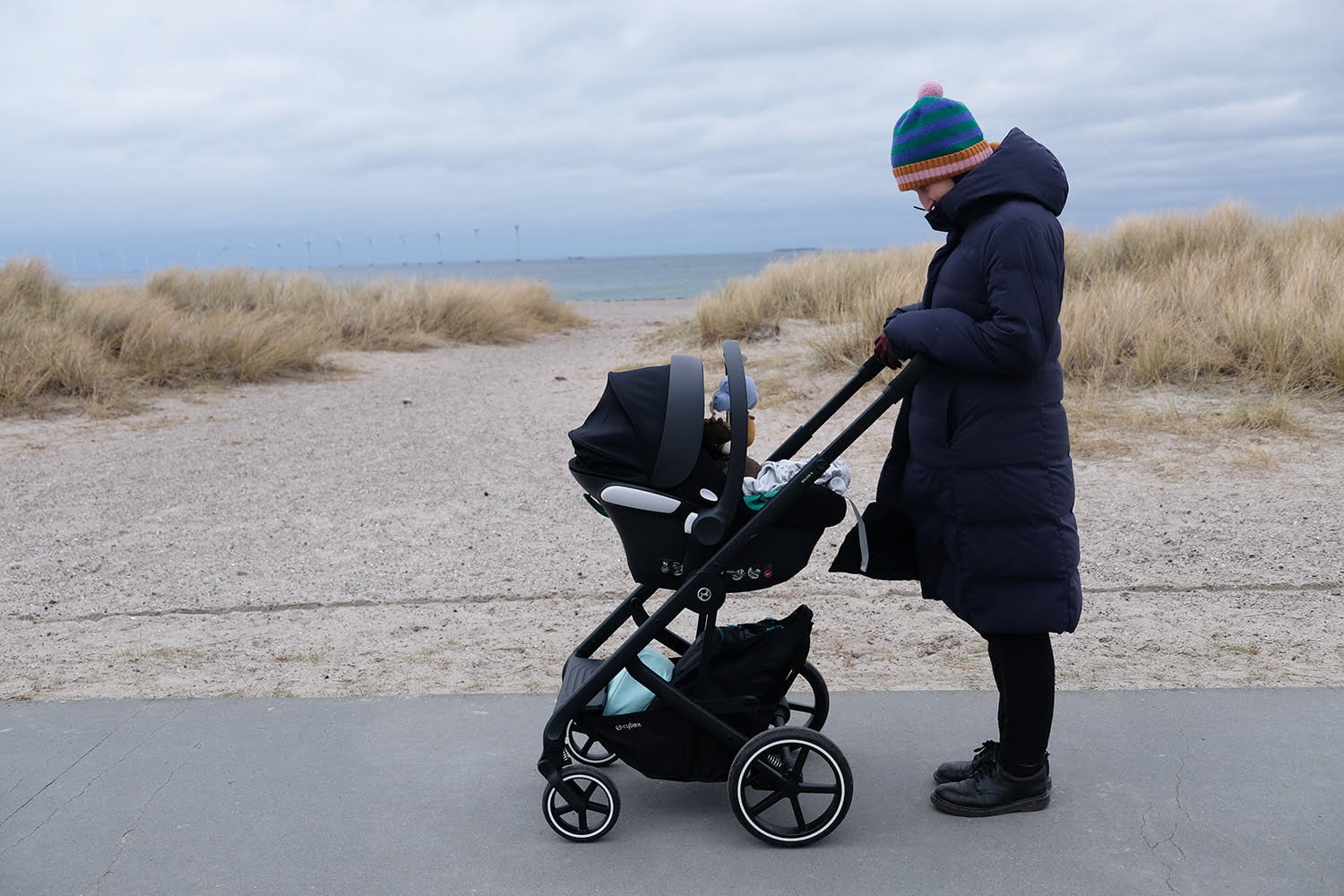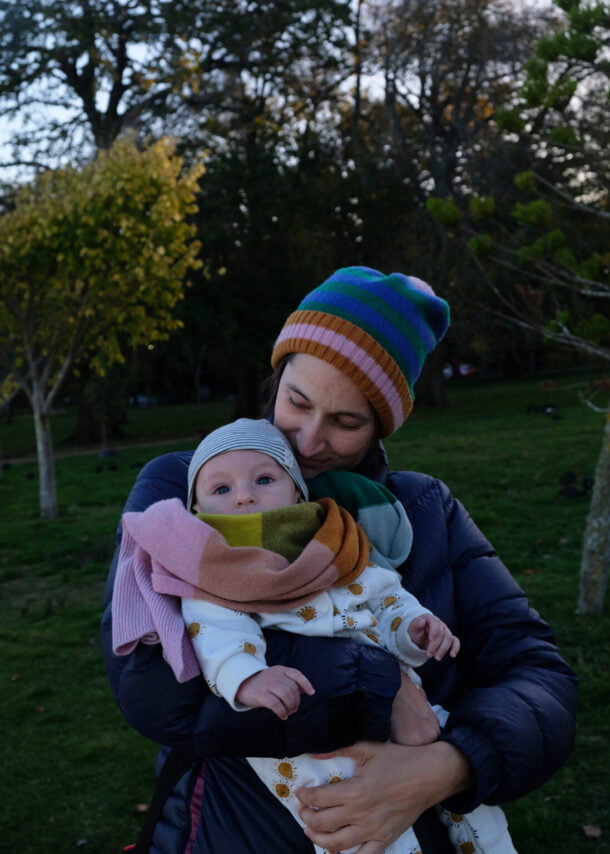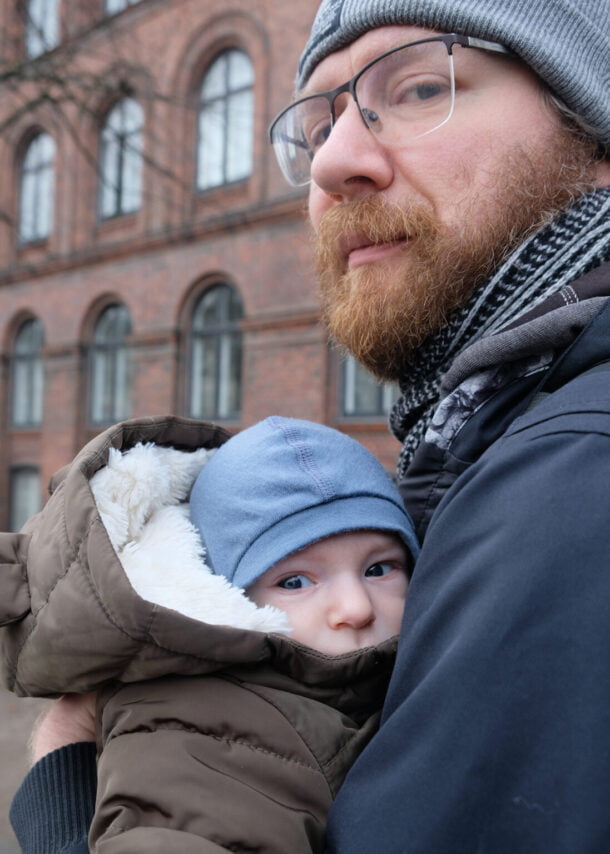As Jana Perkovic comes to the end of her Danish parental leave, she reflects on the different parental leave systems in Australia and Denmark, and the role of innovation and design thinking when devising a suitable policy for parents and society as a whole.

I am writing this from the very end of my parental leave, or ‘barsel’ as it is called in Denmark. It has consisted of bits and pieces that, put together, amount to nine months of leave, paid by Denmark’s equivalent of Centrelink. This is roughly four times what I would receive in Australia.
This scheme went through a minor tweak just before my child was born, and as of August 2022 is organised in the following way:
- 4 weeks of pre-maternity leave that the pregnant woman, man or non-binary person has to take before their due date (if the baby postpones or arrives early, this payment is automatically extended or shortened)
- 2 weeks of mandatory leave for both the birthing parent and the co-parent, which starts with the day of birth
- 8 weeks of mandatory leave for each parent
- 13 weeks of parental leave for the birth mother or birthing parent, which can be traded or exchanged with the partner, who also gets 13 such weeks to freely trade
- If the parents don’t live together, or one parent has sole custody of the child, the distribution is slightly different, and generally the entire shared allowance can be allocated to one parent; and
- starting from 1 January 2024, a solo parent will have the right to share their parental leave (and corresponding payment) with a number of close family members, such as parents or siblings, or parents-in-law. LGBT+ parents will be able to share leave between the two legal parents and up to two ‘social parents’ of their child: other married or unmarried partners, the known donor, and/or the known donor’s partner.
To attract talent, many employers offer to top up the government payment to the parent’s full salary. The full amount is taxed and regulated as any other income, so super contributions are also part of it – there will be no ‘super gap’ for any parent. And when the leave ends, the baby starts heavily subsidised, quality, full-time childcare (often in architect-designed buildings). Until their child starts school, every working parent has the right to finish work early, to pick up their child from childcare, making up the hours at other times. It is an integrated, all-of-society solution.
As I was working in Denmark when I fell pregnant, I accidentally fell into this scheme. It gave me a crash course in the Scandinavian welfare state, both in its thoroughness, and in its fundamental simplicity. Even though the scheme has many options for many situations, there wasn’t much for me to do other than tell the Danish equivalent of Centrelink my due date, and then send in a birth certificate.
To make sure the system runs tick tock, I also had to sign my child up for childcare before he turned four months, via a simple government website that presented every childcare centre in town (information including: carer-to-child ratio, pedagogical concept, daily schedule, and number of children on the waitlist), and let me select two preferences. (The website automatically preselected the two closest to my home and seemed to resist when I tried to venture farther out. This may have been a bug, or a gentle, passive-aggressive nudge, which is not beneath the Scandinavian welfare state.)
The ease of it all was unexciting, and for sure we took it for granted. My barsel – with its government website, its monthly payslips, and its always-slightly-different after-tax payments – had all the practical, helpful blandness of the Ikea market hall. In many ways, it was similar to what happens in Australia.
But I was in Australia during my barsel, baby and partner in tow, and I noticed a contrast with other mothers I met during our visits to rhyme time, swimming classes, and the maternal nurse. (And I say ‘mothers’ because they were all mothers: unlike in northern Europe, my partner was the only father on parental leave.) We were relaxed. I was relatively well-slept because I had another stay-at-home parent to split the load with. Stuck in the same bewilderment, our relationship was not strained under the weight of mutual incomprehension. We knew we were going back to secure employment and affordable, full-time childcare. There would be no career gap for either of us, and there was no acrimonious negotiation of career priorities. There would be no juggle. So, we did what is becoming a custom for parents in Denmark: we took our long leave and went travelling.



It was only gradually that we understood that this time can be a period of mind-bending stress: of endless paperwork, hostile services, delayed payments, impossibly short leave allowances; of childcare at 6 weeks, at 3 months, at 6 months, or never. Of childcare admission interviews, elaborate applications and waitlists; of hostile workplaces, of pumping closets, of mastitis. Of quitting jobs, of financial stress, of reconsidering whether family was living close enough, of moving closer, of expectations unmet, of disappointments, resentment, depression.
Meanwhile, in Denmark, the 2022 reform accidentally shortened the amount of parental leave overall, meaning that some babies of my son’s generation may start childcare before turning one. The consequences are already scrutinised, as is common in this Scandinavian country, where the welfare apparatus is carefully designed, co-designed, redesigned, and subject to crits. In 2002, the last parental leave reform had extended barsel from 24 to 46 weeks. In 2015, researchers tabulated that a few months’ longer stay with primary caregivers before starting childcare gave children a “small but significant boost in well-being” by the age of 13–15, measured in emotional stability, socio-emotional skills, as well as absenteeism and grades. They also noted that longer parental leave reduced the disparities and inequality among children from different families. In 2023, researchers debated whether those gains have been undone.
All this will eventually feed into policy.
The Scandinavian approach
“There is always a design phase; the issue is whether it is done consciously or not,” writes Dan Hill in Designing Missions, a playbook for Vinnova, the Swedish government’s innovation agency. The difference between my smooth Danish experience, and the clunky-at-best, stressful-at-worst Australian (lack of) support for new parents, comes down to this: one is intentionally designed. The other has come together accidentally, shaped by the design forces of political compromise, economic opportunism, and neglect.
In Australia, we like to think of innovation as technology – technology that develops in the business world and then forces our hand (be it automated driving, social media, or AI). The role of government is limited to regulating, or even stifling, innovation. But the Scandinavian approach sees technology as just a tool, while innovation is understood more holistically, as the art of producing transformational social change, using the tools at our disposal – technologies, but also laws, policies, financial incentive, even good old peer pressure.
In this proactive view, the art of good governance, then, becomes the art of building consensus around societal goals (often termed a ‘north star’) and then building vehicles that will get us closer to the world we want to have, to the society we want to be.
Governance, then, becomes design thinking in public, with the public.
The Danish welfare state
There is, in other words, nothing serendipitous about my maternity leave. It has been designed intentionally to retain women in the workforce, earning and paying taxes. The Danish welfare state, with its state-of-the-art childcare and many handouts, relies on full employment. It cannot afford to lose the entire population of women. (This, too, is capitalism.)
But it was also designed to unburden women from unpaid care work. Scandinavian countries have been working on expanding fathers’ leave since they first introduced it in the 1970s. This slow march towards gender-equal parenting is powered by a belief, a value sometimes called ‘the Nordic theory of love’, that individuals should not have to be supported by family members, and that the role of the state is to help people help themselves. In the Scandinavian take on the fair go, we achieve equality and self-sufficiency when individuals don’t need to rely on the bank of mum and dad, grandma’s unpaid childcare, or their husband’s income, to live ordinary, full lives.
In this, too, Australia is similar. We just don’t quite practise what we preach.



Better ways of living – lessons learned
How has this inspired the designer in me? In Australia, I studied design as a traditional, pen-and-paper discipline. But Viktor Papanek diagrammed all the way back in 1984 that the ‘designer’s share’ constituted only 5% of the problem at hand, with the remaining 95% made up of issues extraneous to the brief. Wanting to understand how to be a designer in an expanded sense, I went to Denmark to work in innovation.
But it was through motherhood, not through my paid work, that I’ve really come to appreciate, embrace and enjoy the fruits of the Scandinavian model of innovation as an all-of-society effort that merges governance and design. It is a model that starts with the end goal, and reverse-engineers the way forward. And it makes design into a collective activity by which we first imagine, and then make happen, better ways of living.
What are the lessons here?
Firstly, parental leave policies can be shaped by design thinking, not just by political compromise. To do so, we need a ‘north star’ – a brief, if you want – which is clear about what we, as a society, want. If we want women to combine fulfilling careers with motherhood, and if we believe it’s right to support families to survive those vulnerable first years with young children, let’s say so. Then, instead of a meandering succession of reforms, we will get gradual, transformational change.
Second, designing parental leave policies has to be an integrated effort. What makes the Danish model so successful is that all the parts form a sensible whole. Someone thought about the full journey from pregnancy to a school kid. When the parental leave ends, regulated childcare begins; until the child starts primary school, the parent has the right to a shorter working day (which is not classified nor paid as part-time). This could not have been achieved without close cooperation between the state, employers, and the education sector.
In a third but related point, it serves us well to think beyond the tools of our disciplines. Yes, a designer may be trained in architecture, in web-design, or in policy, but the real magic-making design consists of many small pieces, loosely joined (to paraphrase David Weinberger). My glorious barsel user experience was cobbled together from a mixture of elegant laws, bewildering tax rules, architect-designed childcare centres, and a bunch of government websites that could have been designed in 1997. Some of it was genius. A lot of it was absolutely basic. What matters is that it worked, and it worked as an integrated system.
And finally, let’s not be afraid to complicate our designs by accommodating difficult cases. It moves us into the future. The new swathe of measures for LGBT+ and solo parents, which let them split parental leave between many carers, may be clunky and confusing at first. But it took decades to get shared leave policies right. They were derided and criticised. And today, Danish fathers take the average of three months’ paid leave – more than many Australian mothers can manage.
Perhaps most importantly, there is a sense in Denmark that parental leave is an evolving, open system. There is no attempt to craft a masterpiece, and no individual is pinning their legacy on some reform-to-end-all-reforms. Rather, the system is in constant emergence, negotiated and co-designed between a number of public-minded bodies, from ministries to unions to activists and research groups. The real success of the Scandinavian region, we could argue, rests not on perfectly crafted policies – but in successfully maintaining these processes of collective, incremental improvement of their public services.
A step in the right direction
The new expansion of parental leave by the Albanese government is a step in the right direction: it increases the shared leave allowance to 26 weeks, and significantly bulks up partner leave to four weeks (which can be taken concurrently, so both parents can be at home for the first month). It makes a statement that this country values parents. It also works in tandem with another piece of federal legislation that supports the right to flexible working arrangements. But what about our incredibly expensive, patchy-on-the-ground, poorly regulated childcare sector? As long as there is a gap between the parents’ full-time care and school, this gap will continue to be patched up by parents themselves, juggling childcare with part-time work – and let’s be honest, they will be mostly mothers.
We don’t have the same welfare state in Australia, and we certainly don’t have a small, homogenous population with a strong shared identity. But we have – in certain places, at least – a remarkable density of public-minded organisations that crisscross the governmental, the business and the academic sectors, that speak with and to each other, and are driven by a strong public purpose (organisations, dare I say, such as Parlour). And for all our self-criticism, the Australian society is overwhelmingly underpinned by the values of community, egalitarianism, and the belief in the state as the agent of fairness and self-sufficiency. This is a good basis from which to look across the ocean and see what we can learn from a really, really good example.

Jana Perkovic is a design researcher and editor working between academia, the arts and private practice. Jana was a guest speaker at the Stepping Up session on Supporting Care, which was run in June 2023.
Images: Jana Perkovic




















